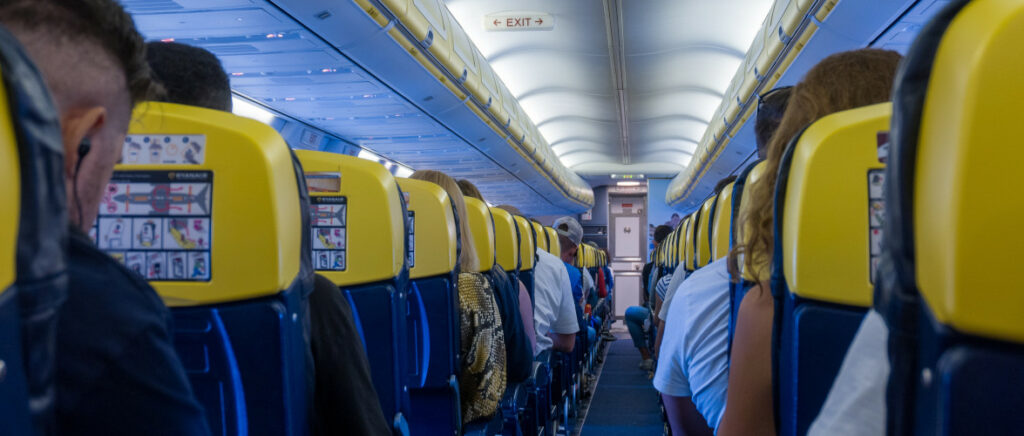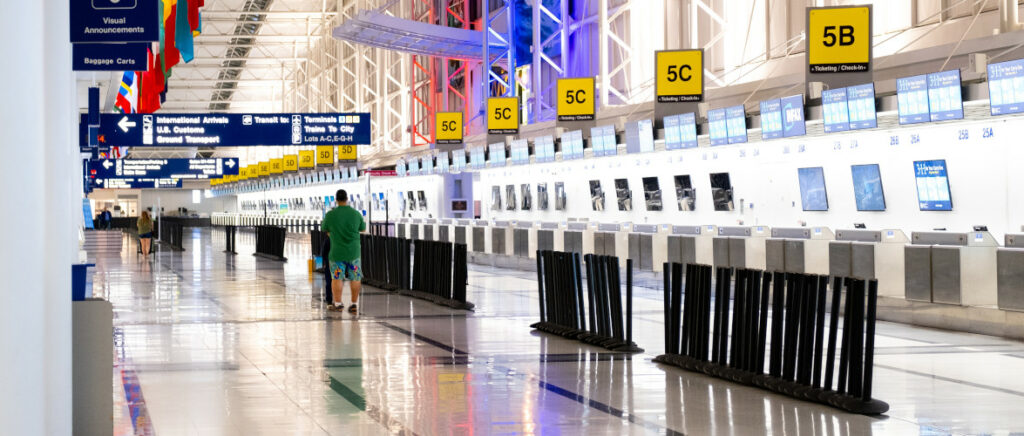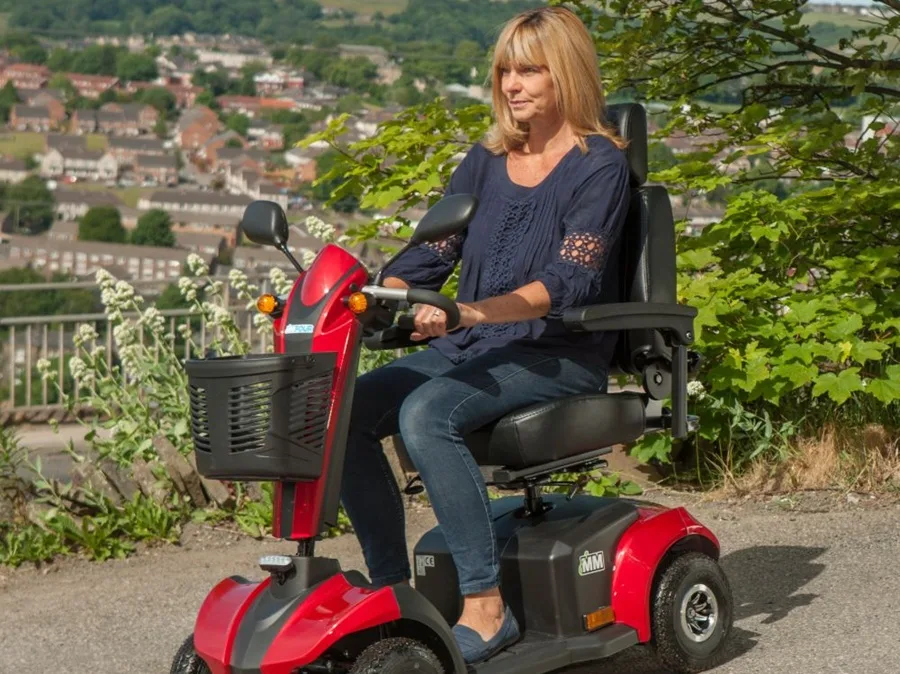Sun, sea, and sand: the perfect ingredients for a relaxing getaway. But for those with mobility challenges, finding the perfect beach can be a daunting task. Fear not, for the UK is home to a myriad of accessible beaches, ensuring that everyone – regardless of mobility – can enjoy a beach getaway.
In this blog post, we’ll take you on a journey to explore the best wheelchair-accessible beaches to visit around the UK, offering a range of facilities and amenities that cater to all needs.

From popular hotspots to hidden gems, these accessible beaches boast stunning scenery, unique experiences, and a wealth of resources to ensure a comfortable and enjoyable beach experience for all.
From the sandy shores of Summerleaze Beach in Cornwall to the breathtaking landscapes of Benone Strand in Northern Ireland, these accessible beaches cater to a wide range of needs, ensuring a comfortable and enjoyable beach experience for all. Here, we unveil the best wheelchair-accessible beaches the UK has to offer.

Summerleaze Beach in Bude in Cornwall is a popular choice for wheelchair users thanks to its level of access and flat viewing areas. With accessible beach huts and toilets available, visitors can enjoy a comfortable day at the beach. Cornwall Mobility provides sand chairs for a smoother experience on the sandy beach, just a five-minute stroll from the centre of Bude, making this one of the wheelchair-accessible beaches you should consider.
Disability-friendly amenities at Summerleaze Beach include:

Brighton Beach, situated on the south coast of England, is renowned for its wheelchair-accessible features. With designated wheelchair-accessible areas on the beach, boardwalks, accessible toilets, and all-terrain wheelchairs available for hire, Brighton Beach has earned its reputation as one of the most accessible seafronts in the country.
Disability-friendly amenities at Brighton Beach include:

Bournemouth Beach in Dorset is an amazing destination and is one of the most accessible beaches in the local area. Boasting fully accessible cliff lifts and land trains, visitors can conveniently access the pier and sandy beach, as well as traverse the promenade with ease.
Disability-friendly amenities at Bournemouth Beach include:

North Berwick Beach is found on the east coast of Scotland and not only offers stunning views of the North Sea coastline but also provides free manual and power beach wheelchairs to ensure everyone can enjoy the beach. These wheelchairs can be found at the Beach Hut in North Berwick Harbour.
The North Berwick Beach Hut is open from April to October, offering accessible beach huts, and wheelchairs are available to hire. In our opinion, it’s one of the best beaches in Scotland thanks to the sandy beach and availability of disabled parking nearby.
Disability-friendly amenities at North Berwick Beach include:

Surrounded by stunning mountains and majestic cliffs, Benone Strand in Northern Ireland offers an unforgettable beach experience. With accessible facilities such as adapted surfboards, hoists, beach wheelchairs, changing benches, walkers, and floating chairs, everyone can enjoy the golden sand and calm waters.
Disability-friendly amenities at Benone Strand include:

Boscombe Pier Beach in Bournemouth is another hidden gem, featuring Mobi-Mats for easy wheelchair access to the sand and sea. Accessible parking spaces are also available on the promenade, between the piers. With adaptable beach huts that can comfortably fit up to four wheelchair users, this beach is perfect for families. Visitors can also enjoy exciting water activities, such as swimming, surfing, kayaking, and paddle boarding.
Disability-friendly amenities at Boscombe Beach include:

Nestled in Pembrokeshire, Wales, Broad Haven Beach offers a 1-mile level walk through the enchanting Bosherston Lily Ponds, as well as concrete ramps and slipways for easy access to the beach. Below the cliffs, visitors can explore captivating rock pools and caves, adding a sense of adventure to this picturesque beach.
Don’t forget to take a stroll around the nearby tranquil lily ponds for a truly serene experience. With its stunning views and diverse wildlife, Broad Haven South Beach is the perfect destination for a day out. If you’re looking for a day out while visiting, the relatively nearby Aberporth beach is just an hour’s drive away, with the Pembrokeshire area being one of the Three Welsh National Parks.
Disability-friendly amenities at Broad Haven South Beach include:

Paignton Sands in Devon provides a wonderful beach experience for everyone. It has two ramps from the promenade to the beach, accessible toilets and level access to the promenade and harbour. This makes it easily available to all. Visitors can enjoy a variety of exhilarating activities, such as swimming, sunbathing, and beach sports, all in the idyllic setting of Devon’s coastline.
Disability-friendly amenities at Paignton Sands include:

No list regarding the UK’s many incredible beaches would be complete without including Llandudno Beach, regarded by many as the jewel of the North Wales cost. When it comes to wheelchair-accessible beaches, Llandudno scores pretty well with a fully-accessible pier, one of the UK’s longest, while the wooden boardwalk and jetty are also accessible for those on wheelchairs.
As beaches in the UK go, Llandudno is one of the very best, so it should not be a surprise to learn that it’s a massively popular tourist destination. It’s loved by many, who often also visit the other wheelchair-accessible beaches in the local area, travelling a short way down the coast to Rhos on Sea and Colwyn Bay.
Disability-friendly amenities at Llandudno Beach include:

While Blackpool may not have the sandiest of beaches in the UK, the long accessible boardwalk certainly makes up for it, while there will be no shortage of fun thanks to the many amenities cherished by tourists. Whether it’s heading up Blackpool Tower to the wheelchair-accessible lookout or getting some cotton candy in the town centre during the summer months, Blackpool has something for everyone.
Disability-friendly amenities at Blackpool Beach include:
From the bustling shores of Brighton Beach to the serene landscapes of Benone Strand, the UK is home to a wealth of accessible beaches that cater to a wide range of needs. With comprehensive accessibility features, specialist equipment, and additional resources at your disposal, these beaches offer unforgettable experiences and breathtaking scenery for all.
So, if you’re planning a summer holiday to remember, don’t let mobility challenges hold you back. The UK’s accessible beaches are waiting to be explored, offering unforgettable views and a sense of freedom that everyone can enjoy. Monarch Mobility is here to help with a variety of mobility scooters, meaning you can get out and about and discover the UK’s scenic coastline for yourself.
Want to travel further abroad? Take a look at our ideas for top accessible European destinations.
Browse our range of mobility scooters for sale today to find your perfect way to get around.
Flying with a mobility scooter or electric wheelchair may seem daunting, but with the right information, it doesn’t have to be.
Can you take a mobility scooter on a plane? This comprehensive guide will help you navigate the world of air travel with your trusty mobility companion, ensuring a smooth journey from start to finish. Get ready to soar!
The good news is that most airlines allow passengers to take their mobility equipment, such as mobility scooters, without any additional cost, and they are not included in the luggage allowance. However, only highly compact or specially designed travel scooters and electric wheelchairs are permitted on planes. It’s essential to familiarise yourself with the airline’s rules and regulations to avoid any unpleasant surprises on the day of your flight.

Each airline may have its own policies regarding mobility scooters on planes. These policies can cover aspects such as the size and weight of the scooter, the type of battery used, and the necessary documentation needed during check-in. To ensure a smooth travel experience, it’s crucial to plan ahead and communicate with your chosen airline about your mobility equipment.
Airline policies for mobility scooters may differ, so it’s essential to check with your chosen airline before travelling. Some airlines have specific regulations and guidelines for checking in mobility scooters and electric wheelchairs without any cost. Furthermore, they may require certain criteria and processes to be followed to take a mobility scooter on an aeroplane.

To obtain authoritative information, you should contact the airline and/or airport you are flying through if you require clarification or confirmation of any details related to the process. It’s also a good idea to consult with a travel agent or seek advice from people with limited mobility who have previously travelled with their mobility devices, as they may have valuable insights and tips to share.
Weight restrictions for mobility scooters on planes vary depending on the airline and aircraft type. Some airlines may have strict limitations on the heaviness of mobility devices, while others may be more lenient. It’s important to research and confirm with the airline directly to ensure your scooter complies with their restrictions before booking your flight.

If your scooter exceeds the weight limit set by the airline, you may need to consider alternative transportation options or look into renting a lightweight scooter at your destination. Being proactive and familiarising yourself with the airline’s rules can save you time and stress when travelling with your mobility scooter.
Taking your mobility scooter abroad is often a hassle-free process, assuming you do the necessary research beforehand. Airlines typically have specific requirements for the size, heaviness, and ease of transportation of mobility scooters allowed on their planes. Compact and lightweight scooters that can be split into sections, packed or that a member of the team can carry are generally permitted, while larger and heavier models may not be.
There are numerous top-rated portable mobility scooters designed with air travel in mind. These models offer convenience, portability, and compliance with the cheapest airline regulations, making them ideal choices for those who need their mobility devices while travelling.
The size and heaviness of your mobility scooter or electric wheelchair are crucial factors when determining if it can be taken on a plane, as airlines have specific requirements. For example, electric scooters that can be loaded in an upright position should not exceed 86 cm in height. If the wheelchair exceeds this height, it must be loaded in a horizontal position.
To avoid any complications during check-in, it’s advisable to contact the airline in question to inquire about their policies regarding the transportation of mobility scooters on their aircraft. Having this information ahead of time will provide you with peace of mind and help ensure a hassle-free travel experience.
An electric scooter that is easy to transport, such as a foldable or lightweight model, is more likely to be allowed on planes. These lightweight scooters often have features that facilitate disassembly and packing, making the process of transporting them on an aeroplane much smoother. In this context, scooters count when it comes to convenience and accessibility during air travel.
When selecting a lightweight scooter for air travel, consider a compact folding travel scooter approved for airline travel. One option is the Genie Auto – the lightest auto-folding mobility scooter in the world.
By choosing a lightweight scooter designed with air travel in mind, you can enjoy a hassle-free journey and focus on the excitement of exploring new destinations.
Transporting lightweight scooters on a plane involves three main steps: disassembling your scooter, packing it, and notifying the airline. Each of these steps is crucial to ensure a smooth and stress-free travel experience with your mobility device. Proper planning and preparation can make all the difference when it comes to getting your scooter from point A to point B.

Remember that not all mobility scooters are suitable for air travel, and airlines may have specific requirements for the type, size, and weight of scooters allowed on their planes. Always consult with your chosen airline before booking your flight to make sure your scooter complies with their travel scooter policies.
Disassembling your mobility scooter may be necessary for air travel, so it’s essential to know how to do this safely and efficiently. Common steps for disassembling a scooter include:
It’s important to note that specific instructions may vary depending on the model of your mobility scooter. Always consult the manufacturer’s manual or contact the airline for any specific guidelines or requirements. Proper disassembly not only ensures compliance with airline regulations but also helps protect your mobility device from potential damage during transit.
If you need help or further assistance, make sure to get in touch with a member of the team. The last thing they will want is for you to have reduced mobility and for you to miss your flight, so will often be happy to help.
Properly packing your mobility scooter for air travel can help protect it from damage during the flight. Here are some steps to follow.
By following these steps, you can ensure that your own mobility scooter, electric scooter, or travel scooter arrives safely at your destination.
Keep in mind that airlines may have specific requirements for packing mobility scooters. It’s a good idea to consult with your preferred airline in advance, well before checking in, to ensure your scooter is packed according to their guidelines. Proper packing – such as covering in a soft travel case – will give you peace of mind knowing your wheelchair is well-protected during your journey.
Notifying the airline in advance about your mobility scooter is crucial to ensure a smooth travel experience. When informing the airline, provide them with the make and model of the scooter, as well as its weight and dimensions. If your scooter requires special instructions for disassembling and packing, make sure to communicate this information to the airline as well.
It’s important to supply this information at least 48 hours before your flight to give the airline ample time to make the necessary arrangements. By being proactive and providing all the required information, you can help ensure that your travel experience with your mobility scooter is as seamless as possible.
Taking a mobility scooter battery on a plane is generally allowed, but there may be restrictions depending on the airline and the type of battery. Most airlines allow passengers to carry lithium-ion batteries, provided they are used in scooters that count as assistive equipment and do not exceed 160 watt-hours.
It’s essential to verify the specific battery regulations with your chosen airline before your trip. Failure to comply with these regulations could result in delays, fines, or even being denied entry. So, it’s always better to be safe than sorry and make sure you’re in the clear before embarking on your trip.
Different types of mobility scooter batteries have varying restrictions for air travel, so it’s essential to know which type your scooter uses and the airline’s policy. There are a few primary types of batteries used in mobility scooters, ranging from lithium batteries to those with lead acid or other more specialist materials.
Lithium-ion batteries, also known as lithium batteries, must not exceed 160 watt-hours, and a maximum of two are permitted to be carried on board an aircraft with a mobility scooter. Lead acid batteries must not exceed 300 watt-hours, and a maximum of two can be taken on a plane in conjunction with a mobility scooter that uses lithium batteries.
For other types of batteries, the restrictions may be similar, but it’s always best to consult with the airline directly to ensure compliance with their specific policies.
Most airlines do not charge extra for bringing a mobility scooter on a plane, as they are classified as assistive equipment and are excluded from the baggage allowance. However, it’s always a good idea to double-check with your chosen airline to make sure you won’t encounter any unexpected fees.

Travelling with your mobility scooter involves various aspects, including:
Proper planning and preparation can make all the difference in ensuring a smooth and enjoyable journey with your mobility device.
Being familiar with your chosen airline’s policies and requirements for mobility scooters can help you anticipate any potential challenges and address them before your trip. By staying informed and proactive, you can focus on the excitement of your travels and make the most of your time away.
Navigating airports with a mobility scooter can be challenging, especially if it’s your first time travelling with one. It’s essential to plan ahead and request assistance if needed. Familiarise yourself with the layout of the airport and know where to go for check-in, security, and entry.

If you’re unsure about any aspect of navigating the airport with your mobility scooter, don’t hesitate to ask for help from airline staff or fellow travellers. They can guide you in the right direction and ensure you have a smooth and stress-free experience.
Getting on the plane with a mobility scooter may require additional assistance or equipment, so it’s crucial to communicate with airline staff. As mentioned before, when notifying the airline about your mobility scooter, make sure to provide them with all the necessary information, including the make, model, and dimensions of the scooter.
When you board, airline personnel may gate-check your scooter and deliver it to the aircraft’s cargo hold. They should also return your mobility scooter to you in the jetway or at the door of the aircraft upon disembarking.

By communicating your needs and working closely with airline staff, you can board with ease with your mobility scooter nearby or be sat in a dedicated aisle wheelchair. Flying with a wheelchair shouldn’t be a stressful experience, so next time you’re flying, make sure to be open, honest and clear with staff.
Arriving at your destination with a mobility scooter may involve reassembling and retrieving your scooter, so it’s essential to plan accordingly. Upon disembarking the aircraft, airline personnel should return your mobility scooter to you in the jetway or at the door of the aircraft.

Take the time to reassemble your scooter properly and ensure all components are functioning correctly before continuing on your journey. By being prepared and patient, you can enjoy a smooth arrival at your destination and start exploring with your trusty mobility companion by your side.
Travelling with a mobility scooter is entirely possible with the right planning and preparation. By familiarising yourself with airline policies, choosing a suitable scooter for air travel, and properly disassembling, packing, and notifying the airline, you can ensure a smooth and enjoyable journey. Remember to always double-check the specific requirements of your chosen airline and keep an open line of communication with airline staff.
For ideas for European travel, why not check out our blog 10 of the most accessible cities in Europe. You might also want to know if you can take a mobility scooter on a cruise ship.
With these tips in mind, you’re ready to embark on a fantastic adventure! If you haven’t got the right type of scooter and would like to buy a travel mobility scooter before your next trip, make sure to check out Monarch Mobility’s range of portable scooters.
Have you ever found yourself struggling with mobility, feeling limited in your daily activities, and wondering, “Do I need a mobility scooter?”?
In this comprehensive mobility buying guide, we will explore the world of mobility scooters and powered wheelchairs – comparing different types of mobility aids, how they can help your individual needs, and what to do before buying a mobility scooter or powerchair.
Let’s embark on this journey towards independence and improved quality of life!
Choosing a mobility scooter or a wheelchair can be life-changing if you’re living with limited mobility due to age, injury, or illness. But with so many options available, it’s easy to feel overwhelmed.
Alongside your health needs, there are other things to consider when buying a mobility scooter such as your lifestyle, daily routine, and the environment in which you’ll use your mobility aid. It’s also important to consider how a mobility scooter can benefit your emotional wellbeing.
If you suffer from a physical disability, injury, or medical condition that restricts your mobility, a mobility scooter or electric wheelchair could be an ideal solution.
When choosing a mobility aid, it’s important to consider any specific requirements related to your condition. For example, if you are buying a mobility scooter for arthritis, padded armrests and shock-absorption can reduce pain and discomfort.
When deciding whether a wheelchair or a mobility scooter is the right choice for you, consider your daily activities and mobility challenges.
What is the environment like where you will be using it? What will you be using it for? Being able to travel over uneven surfaces, carry your shopping, and travel the distance you need in a timely fashion are all important factors to consider.
Take a look at this article to find out where you’re allowed to use a mobility scooter.
If you need to transport your mobility scooter in your car or take it on an aeroplane, you may need to consider a folding mobility scooter to make travelling convenient.
When you have identified your personal mobility needs, you can decide what type of scooter or powered wheelchair will be best for you. There are different types of products available, with various features depending on your needs.
Take a look at our article, which provides a detailed comparison of mobility scooters vs electric wheelchairs to help you make an informed decision, or consider if a rollator might offer enough support for you.
Mobility scooters are an excellent choice if you need to travel longer distances and require more independence. Typically with three or four wheels, a padded seat, and a handlebar for operation and steering, mobility scooter benefits include ease and convenience.
There are two main types of mobility scooters:
Read our blog to better understand the difference between Class 2 and Class 3 mobility scooters.
A free home demo is a great way to try out the many benefits of a mobility scooter. Chat with our experts to find out more.
If your mobility is more limited, a wheelchair may be more suitable.
Manual wheelchairs are usually lightweight and portable, and are ideal for short distances and easy storage
Electric wheelchairs (powerchairs) offer freedom and independence for anyone who is unable to use a mobility scooter or manual wheelchair. They are usually controlled by a joystick and provide excellent support and comfort. Buying the right powerchair is incredibly important, so speak to our mobility experts if you need more information or a home demo.
Before deciding on your preferred mobility aid, it’s important to test-drive various models to find the one that suits you and which you feel confident driving. Ensure you’re comfortable with the vehicle’s maximum speed, and check if the scooter fits your lifestyle, including your ability to store and maintain it.
If you’re confident that a mobility scooter or powerchair is the right choice, it’s time to look at how to get one.
Browse Monarch’s range of mobility scooters to gain an understanding of the various models, features, pricing.
Don’t forget, before making a decision, consider factors such as:
Our mobility scooter buying guide runs through everything you may need to consider to find the right scooter for you.
The cost of mobility scooters varies greatly depending on the model type and specifications.
If you need help with costs, there are schemes and mobility benefits available in the UK that you may be eligible for, including:
Like any vehicle, your mobility scooters will benefit from regular maintenance and servicing.
Mobility scooter insurance is also strongly advised to protect against potential risks and offer peace of mind.

A reliable mobility scooter or powerchair can be a life-changing device for individuals with mobility issues, offering newfound freedom and independence.
By understanding your mobility needs and exploring different mobility aids, you can make an informed decision and embark on a journey towards a more mobile and independent life.
If you’re still wondering, “Do I need a mobility scooter?” our team is here to help!
Explore our fantastic range – or speak with our friendly experts for advice and a free home demo.
Will you be joining us at the Motability Harrogate event on the 1st and 2nd of August?